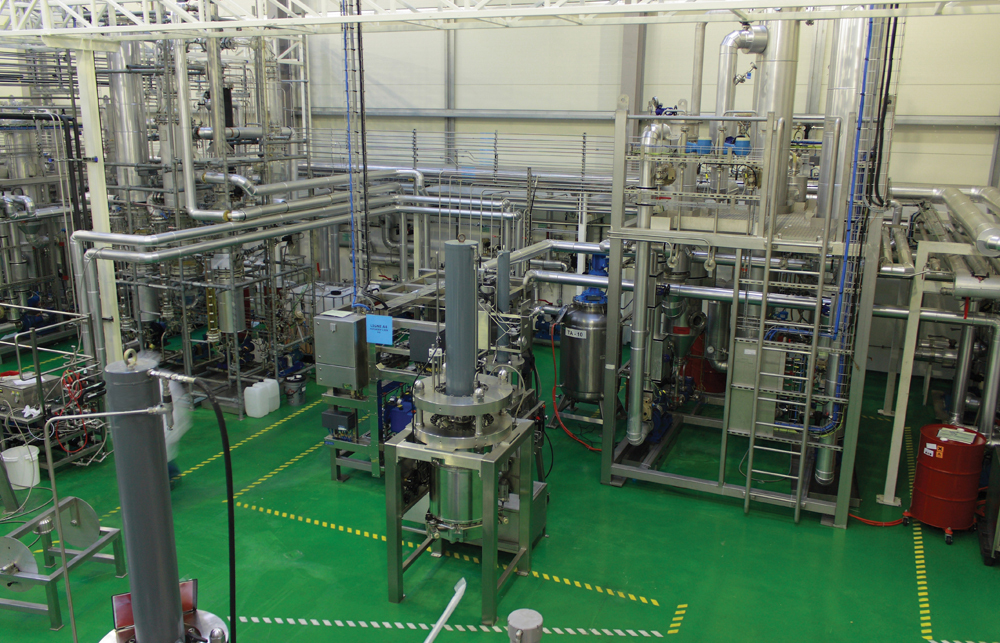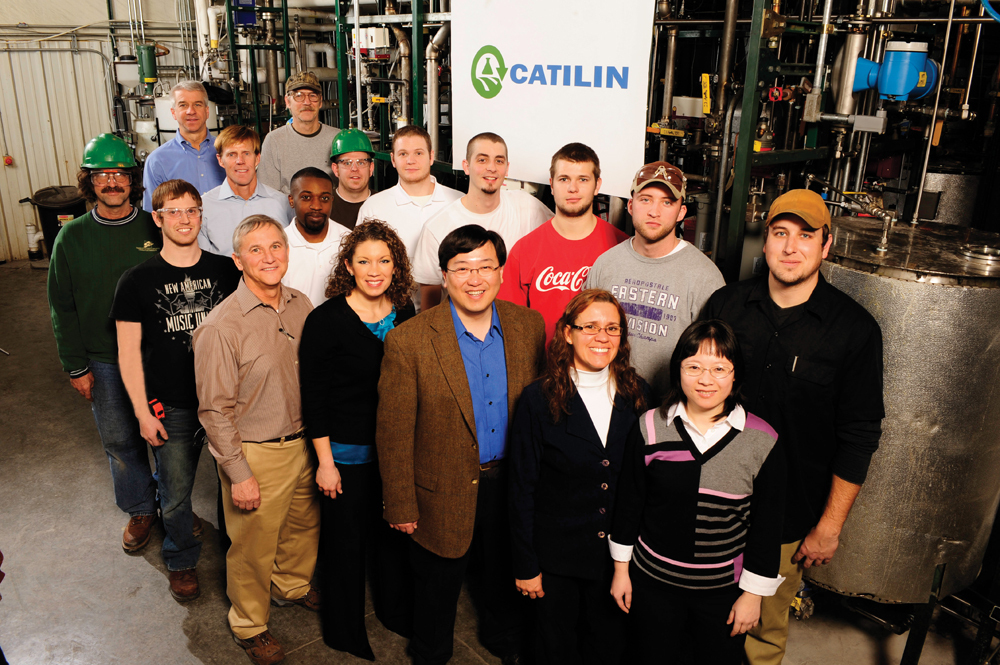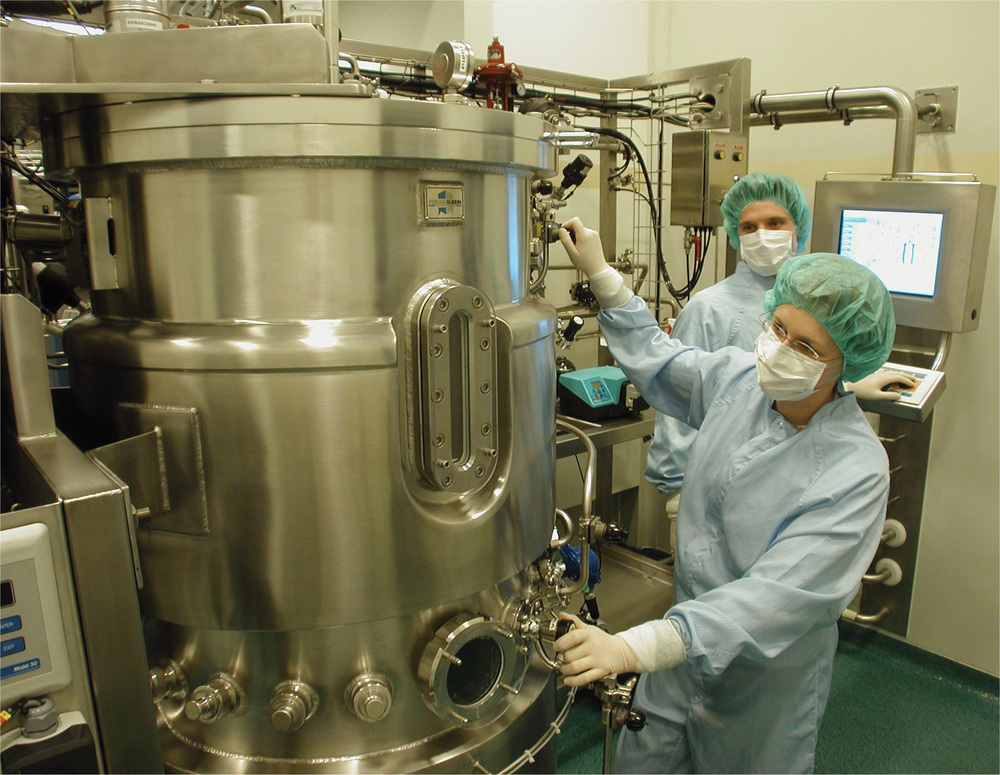The Pure Potential of Glycerin





PHOTO: NOVASEP
March 9, 2011
BY Luke Geiver
For the past three years, a Keokuk, Iowa, biodiesel and glycerin refining facility has been idle, but since Enervation Advisors LLC, a distressed-asset buyers group, purchased the plant, operations at the 5 MMgy facility are about to change. The first major change, slated between March and April, has little to do with the plant’s near-term ability to produce biodiesel. Paul Tantillo, Enervation’s director of operations and a managing member, says that this particular distressed asset features an intriguing opportunity to make short-term cash flow—and it starts with glycerin. “If you are fairly sharp,” Tantillo says, “you are going to make money making glycerin because it’s a very stable environment.”
The Keokuk facility, which has a 4 MMgy glycerin refining capacity, is receiving a facelift on the existing membrane filtration system that will add a coalescer, a liquid-liquid separator hydrosep unit, a Pall Corp. filtration system and a vacuum, according to Tantillo. “I want volume and to be cost effective,” he says. For Tantillo and his group to pay cash for a facility that sat idle for three years partly in the absence of a federal blender’s credit, and for the first cash flow in Keokuk to go toward revamping a glycerin refinery in the face of a recent volatile glycerin market, may sound like risky business. But, if Tantillo’s excitement to restart the facility as one that can more efficiently and effectively purify glycerin to a technical grade spec is an indicator, then the time and effort spent on marketing Keokuk's glycerin should pay off. Enervation also has plans to purchase other biodiesel facilities.
For every billion gallons of biodiesel produced, 100 million gallons of glycerin is also produced. If the biodiesel producer is not interested in the glycerin as an alternative revenue source, the copious amount of byproduct produced could be a problem, but for the producer interested in marketing it, glycerin is a good thing.
A Purity Problem
When considering glycerin, Brad Albin, vice president of manufacturing for REG, says the first thing to realize is that there are a lot of different types of glycerin and that from a finished product perspective, there are six different types and more than 1,500 known uses for glycerin. Some biodiesel facilities clean up the glycerin stream by evaporating the methanol and the water, some simply ship off the glycerol without performing any purification and others combine a number of steps like the Keokuk plant.
The tried-and-true method of distillation still represents the best process for purifying and, although other novel processes are creeping up towards the 99.7 percent required to meet the USP spec, distillation is still the only method to do so. The benefits of distillation come with high energy costs and require, in most cases, a separate building equipped with stainless steel piping, all of which limits the ability of many producers to operate a distillation facility. That doesn’t mean that purification problems can’t be solved though.
Catilin Inc. has developed a solid catalyst used for biodiesel production that resembles a granular solid of roughly 20 microns in size, according to Dave Sams, vice president for business development. “Because our process is dry and our catalyst is not washed in the glycerin, our glycerin is about 98 to 99 percent pure without post processing of any kind,” Sams says. “And that is what happens for all of these solid catalysts.” The catalyst is mixed directly into the reactor and, Sams says, a filter is used to retain the catalyst within the reactor for reuse while allowing the products to flow downstream to the separator. Consequently, the glycerin is high purity and can be sold into the technical grade markets.
At Piedmont Biofuels, Rachel Burton, research director for the innovative cooperative that has partnered with Novozymes to develop an enzymatic biodiesel approach for transesterification and esterification, has released the information surrounding her work. The results show that by using the enzymatic approach, Piedmont Biofuels can produce glycerin with 99.6 percent purity.
Doug DiLillo, industrial biotechnology lead at Pall Energy Group, and his team have developed individual processes that involve membrane technology filtration, which is also being used in the Keokuk plant. “We’ve primarily used the membrane approach for upgrading the glycerin stream from a biodiesel plant for those that are looking to generate a second revenue source,” DiLillo says. Nothing has been commercialized at this point, but DiLillo says Pall can work with someone from within the industry to develop and explore the application for a specific use that would involve feasibility investigation, proof of concept, design and system engineering. Pall already provides filter modules that are impregnated with carbon for deodorization of glycerin and other filters sized at the submicronic level for sterile filtration applications needed for some glycerin streams.
Advertisement
Advertisement
While DiLillo says the membrane approach is ultimately going to be more economical than distillation, ion exchange or some other use of resins or carbon, Pall has not yet “gotten quite far enough to prove that out.”
In Wisconsin, Bob Keef, market manager at GEA Filtration is also working with membrane filtration technology specifically suited for glycerin streams at biodiesel facilities. “Within our group,” he says, “we design and build membrane filtration systems using whatever is appropriate for the particular application.” For biodiesel-based glycerin streams, Keef says that membrane compatibility issues usually are the greatest challenges for creating a successful system. At their pilot facility in Wisconsin, Keef and his team have tested several membranes and found two or three that are well-suited for glycerin purification. The GEA systems are based on cross-flow filtration that use a clean-in-place cycle (CIP) that is designed to be cleaned and regenerated after each CIP. The team has tested polymeric (fancy plastic) membranes that he says will last about one year, give or take. For specialty applications, specifically glycerin purification from a biodiesel stream, there are also inorganic membranes made from ceramics or stainless steel that will last five to 15 years.
Like DiLillo at Pall Corp., Keef says that GEA can work with an individual producer to design a system. GEA will test a system they believe would be well-suited for a particular biodiesel facility at its own pilot facility for two or three days before eventually testing a skid-mounted unit at the actual commercial site. “Membrane filtration technology is creating some opportunities,” he says, in part because “it is all based on molecular weight separation” that uses centriphical pumps.
While the idea of membrane filtration technology is gaining real strength in the area of glycerin purification strategies, there are other approaches, such as that of purification powerhouse Novasep, whose approach is already commercially available. The AmbersepBD50 combines chromatography and polymeric separation technology in a scalable process suited for glycerol purification. “We’ve made a lot of simulations and we’ve found that in the case of technical grade glycerol,” says Francis Pejot, bio industry market manager for Novasep, “the operating cost for our technology is much lower than distillation.” The lower costs, Pejot explains, are directly linked to the cost of steam needed to operate a distillation system.
From solid catalysts, to enzymes, membrane filtration systems or chromatography-based units, and, of course, distillation, there are multiple ways to purify glycerin, and Albin says in the future “they will all play a role. Solid catalyst might be good for some. Membrane technologies will have their place too.”
Advertisement
Advertisement
The Next Place
There are those, like Francis or DiLillo, who are unsure of the potential markets for glycerin, given the reality that as more biodiesel plants come online, more glycerin will be available, which effectually overloads the market and drives down the cost. But, both Albin, and Eric Fobes, renewable energy director from Nebraska-based Gavilon Group LLC, say they believe that more glycerin is a good thing. Fobes explains that elements of the glycerin market are much different than they were only five years ago, and that is making glycerin a much more valuable product.
When foreign countries started building capacity and found ways to ship glycerin in bulk, the product shifted from a specialty chemical to what it is now, a commodity. “Between 2007 and 2008,” he says, “the market built massive glycerin refining capacity,” in Europe, South America and Southeast Asia, all on the backend of biodiesel. In 2008 and 2009, glycerin buyers then got “new medicine,” during the financial meltdown and changed their buying habits, and got better at purchasing spot and 90-day contracts, all of which happened at the same time a massive influx of product was coming into the U.S. market. Today, in combination with a new glycerin product qualification system that once took nearly six months and now takes only a few days, Fobes says there is a supply chain for glycerin that is repeatable.
Those two enhanced elements alone signal for Fobes that glycerin use will most likely grow, at least in the USP sector. Fobes explains that several glycerin users today could use technical grade but don’t, either because of stigma, or more importantly a consistent supply. As an example, he points to drilling mud used for oil and gas. Most drilling mud contains a significant volume of USP grade glycerin that could actually be technical grade if there were a ratable supply. The quality testing and glycerin specs vary so greatly in the technical grades, creating a hurdle for technical grade expansion, according to Fobes. “The percentage of market share that USP gets today I don’t believe will change significantly in the future,” he says, adding, however, that, “if we can find ratable supply of technical grade glycerin, we will see more tech grade glycerin sold to certain market segments.”
Fobes’ thoughts on the expansion of the glycerin market might not inherently show that biodiesel-based glycerin usage could be significantly increasing, but Albin’s take just might. Most of REG’s plants sell crude glycerin. There is an REG facility in Illinois, however, that purifies glycerin to technical grade as well, but Albin says the plant isn't currently taking any glycerin to a USP grade. A company such as Colgate, which uses glycerin for toothpaste, has a very selective process and strict requirements for the product it uses, but, he adds, “There is only so much toothpaste that will be used.”
Because of that, and because biodiesel’s footprint is increasing, which increases glycerin’s footprint as well, “a lot of the chemical products that are made of petroleum products” could eventually be made from a glycerin source, he says, based on the attractive price of glycerin. “Chemical companies will find a way to make products out of glycerin,” he says. “That is the future.”
For Albin, a saturated market is a bridge to a greater potential. “Until you got to the billions of gallons of biodiesel being made in the U.S. and Europe,” he explains, there wasn’t enough security in using glycerin for products typically made from petroleum. “I can tell you that we are in discussions with at least three to six different routes for where that glycerin can go,” Albin says. And these aren’t, as he says, the normal routes.
Author: Luke Geiver
Associate Editor, Biodiesel Magazine
(701) 738-4944
lgeiver@bbiinternational.com
Upcoming Events





